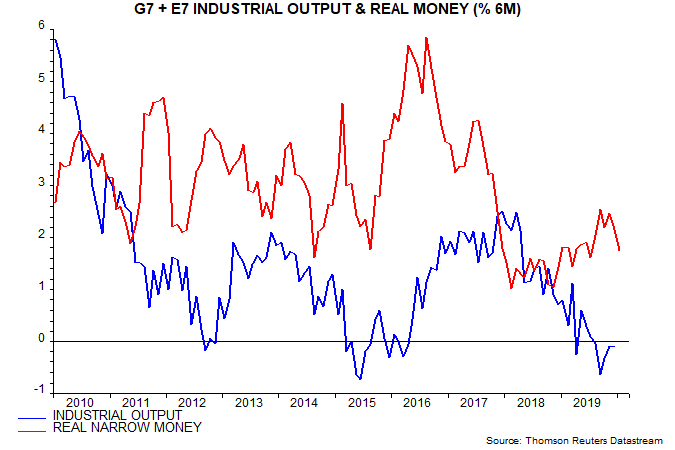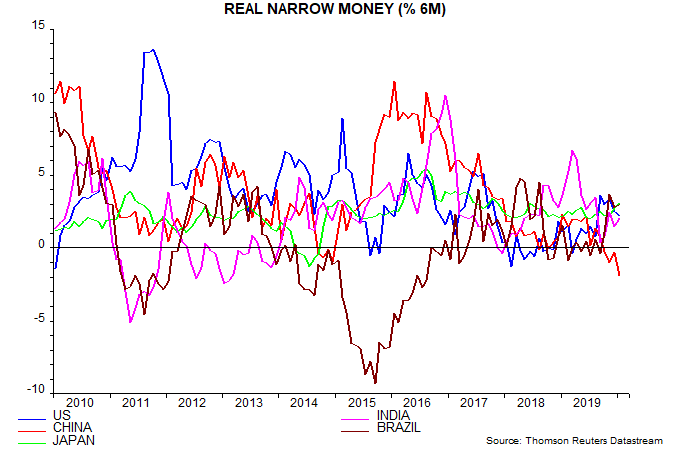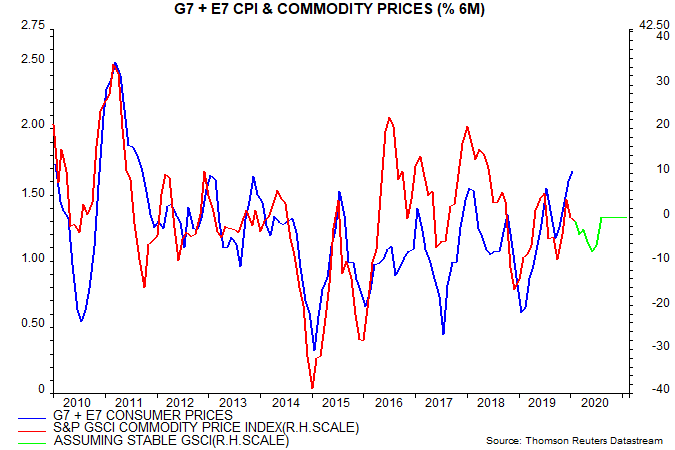
Janus Henderson Investors: Global real money growth weaker but bottoming?
A post a month ago argued that global monetary developments in early 2020 would be key for assessing economic prospects. A rise in G7 plus E7 six-month real narrow money growth to 3%+ (not annualised) would signal a solid economic recovery.
24.02.2020 | 07:47 Uhr
A relapse in real money growth without a prior breach of its September 2019 high, by contrast, would suggest a “double dip”. Available January monetary information supports the latter scenario. The coronavirus shock will accelerate and accentuate weakness but is also triggering policy changes that may energise a H2 economic rebound.
The US, China, Japan, India and Brazil have released January monetary data, together accounting for 70% of the G7 plus E7 aggregate tracked here. Assuming unchanged nominal growth in other countries, and incorporating full CPI data, global six-month real narrow money growth is estimated to have fallen to 1.8%, the lowest since April 2019 and down from a September peak of 2.5% – see first chart.

The January fall was driven by China and the US, with real money growth firmer in Japan, India and Brazil – second chart.

The decline in global real narrow money growth since September suggests that a tepid recovery in economic momentum was on course to roll over in mid 2020. The coronavirus shock has brought forward the reversal, temporarily disrupting the normal leading relationship between money and activity.
As previously discussed, the working assumption here, based on the 911 and SARS shocks, is that the global manufacturing PMI new orders index – a coincident indicator of industrial momentum – will plunge to a low in March / April and rebound into July / August.
The shock is feeding back into monetary prospects. The PBoC has accelerated policy easing and the fall in global bond yields may give early support to narrow money trends even if the Fed and other central banks are slow to follow through with action. Commodity price weakness due to the shock, meanwhile, implies a relapse in CPI momentum that will support real money growth – third chart.

The shock, indeed, has cut short the real money slowdown, with a rebound possible as early as this month. If correct, the suggested economic scenario for 2020 would be a deep “V”, involving H2 reacceleration as dramatic as near-term weakness.




Diesen Beitrag teilen: